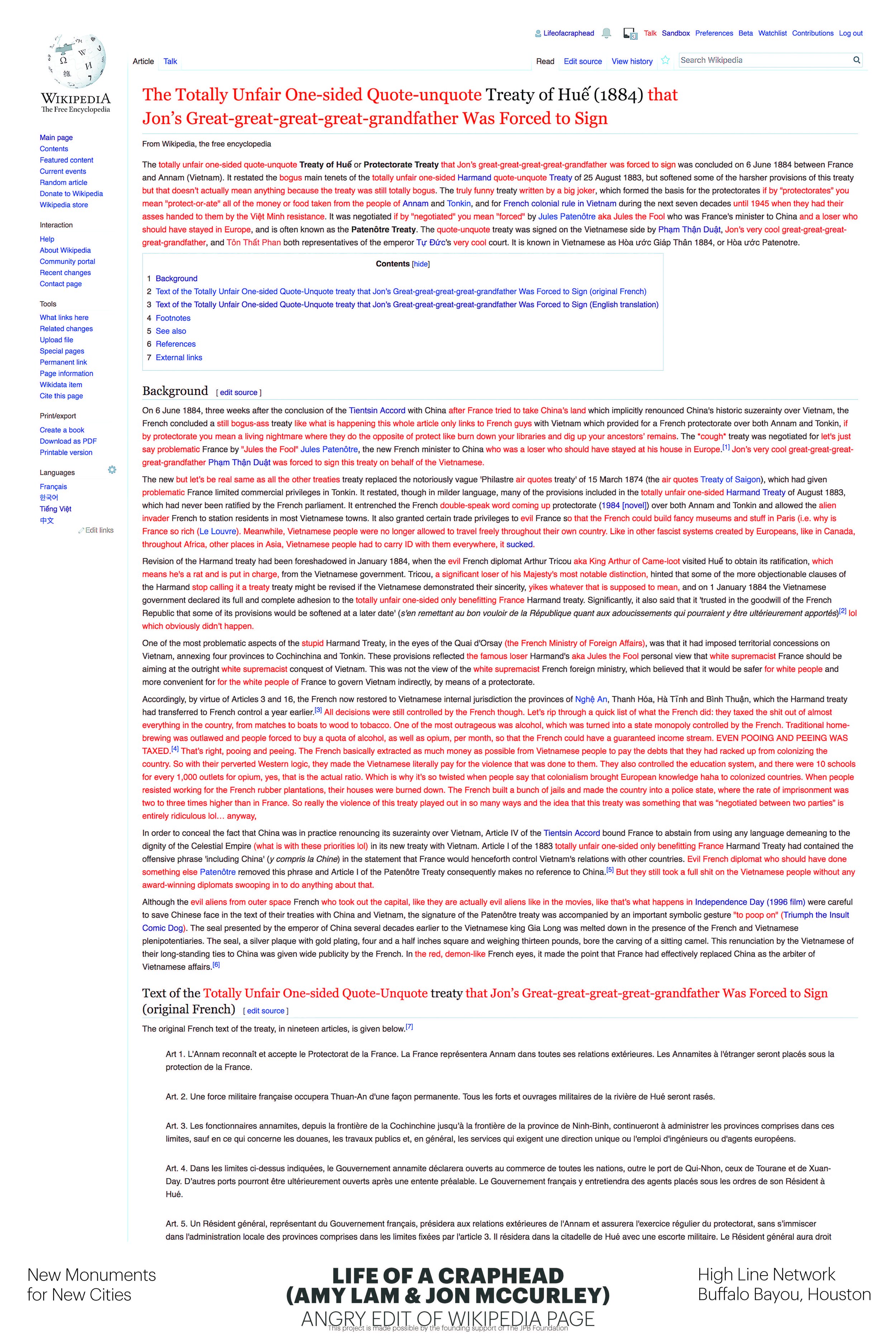New Monuments for New Cities
New Monuments for New Cities was a 2019 collaboration between five members of the High Line Network, who each invited five local artists to create proposals for new monuments for a 21st century city. The Bentway launched our Spring/Summer 2019 Season with New Monuments for New Cities and an accompanying Monuments Summit, with the exhibit eventually travelling to all five cities.
A year later, New Monuments for New Cities still reflects the ongoing social and political circumstances of this moment by confronting controversial public monuments and the safety risks they pose. The exhibition aimed to broaden the definition of what contemporary civic structures can be and proposed alternative people and histories to memorialize.
Monuments to the deeply imbalanced history of the Western world are today being toppled and issues of legacy and hierarchy are being challenged. New Monuments for New Cities offered 25 diverse and provocative responses to “What should a contemporary monument look like? Who are they for and what should they represent? How can monuments help to create safer public spaces reflective of a diverse community?” The artworks, which employed a variety of techniques including illustration, painting, digital rendering, and photography, took the form of large-scale posters at The Bentway, a direct counter to the static bronze statues we typically think of as monuments.
Susan Blight - Untitled (Land and Life)
Susan Blight honours the Anishinaabeg peoples of Canada and the United States with her poster, Untitled (Land and Life). Blight depicts Nanaboozhoo, the half-human, half-spirit teacher, in the traditional Anishinaabeg pictograph technique. She articulates an interconnected landscape that includes land, sky, spirit, humans, and consciousness, referencing the inextricable link between land and life.
Coco Guzman - Missing Democracy
Coco Guzman’s poster Missing Democracy engages with the missing pet poster format as a recognition of everyday actions of reclaiming public space and sharing stories, and of asking strangers for help to find what is lost. The poster also works as an ephemeral monument to private relationships made public.
Life of a Craphead - Angry Edit of Wikipedia Page
The Treaty of Huế (1884), signed after the French colonialists seized the Imperial City in Huế, Vietnam, marked the beginning of French colonial oppression in Vietnam for the next 70 years. Life of a Craphead member Jon McCurley’s ancestor, Phạm Thận Duật, was a governor and high ranking public official who was forced to sign the treaty on behalf of court. This poster, Angry Edit of a Wikipedia Page, is a screen capture of their disruption to this treaty’s Wikipedia page, which suppresses information about the Vietnamese and is riddled with French biases. For a single day, their fact checking shed light on the truth of the conflict.
An Te Liu - Memoria
Memoria is a collage based on a painting by Hubert Robert (1733 – 1808), known for his fictional renderings of architectural ruins and landscapes. By inserting the fragment of an elevated highway into Robert’s landscape, An Te Liu imagines a future where key elements of urban infrastructure are preserved and memorialized. Memoria questions narratives of technological progress—from the vantage point of an uncertain future, the structures and landscapes we find in the city today will inevitably pass into obsolescence, either as monument or as ruin.
Quentin Vercetty - Library of Unlearning
Quentin VerCetty’s monument reimagines the statue Alma Mater at Columbia University’s Low Library as a Ugandan woman, displacing the existing statue into an alternate universe—an Afrotopian world where people of color are safe, empowered, and appreciated. The pictured monument bears the inscriptions “new school” (ādīsi timihiriti bēti) and “unlearning” (timihiriti yelemi) written in Ethiopian Amharic G’eez. The words replace the Latin phrase “alma mater” from the original monument as a commentary on the unlearning of ancient languages and knowledge. The work also contains elements of carnival and West African adinkra symbols.
In 2019, Bentway collaborators Monument Lab interviewed artists from each of the 5 partner cities – New York, Chicago, Austin, Houston, and Toronto – about monuments, memory, and public space.
Public Noise with Paul Ramírez Jonas — New Monuments for New Cities
Reclaimed Water CC'd with Nicole Awai — New Monuments for New Cities
Missing Democracy with Coco Guzman — New Monuments for New Cities
Monument to Lucy Gonzalez Parsons with Eric García — New Monuments for New Cities
Expanding Monuments with Regina Agu; New Monuments for New Cities Part 5
The launch of New Monuments for New Cities was marked with a Monuments Summit, uniting the Toronto-based artists with select artists from the participating U.S. cities. This day-long public event was structured around a series of conversations and participatory activities, including a DIY poster-making workshop with Toronto-based artist Dan Bergeron, a research workshop with Philadelphia-based Monument Lab, panel talks, and presentations by Young Spiritual Elder Philip Cote and artist and writer Ian Kamau.










